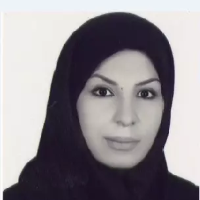Mythological and Sacred Plant Motifs in Parthian Art with Emphasis on Coins' Motifs
Author(s):
Article Type:
Research/Original Article (دارای رتبه معتبر)
Abstract:
Coins represent important objects of our cultural heritage and are usually of high artistic and cultural value. The archaeological issue concerns questions in relation to the iconography, dating, provenance, and technology of production or authenticity. So, the symbols on the coins are the most important guide for researchers in recognizing religious beliefs with religious opinions and beliefs in different historical periods. Myths have played a major role in the culture and art of every nation for a long time and they have had various usages in different eras and have been manifested in the narrative stories or visual symbols from the heart of the religions, beliefs, and art of any nation. Plant motifs have a special place in Iranian thought from the past, which have been sanctified as symbols and myths in Eastern cultures and have been associated with ancient rituals. Numismatics is an auxiliary source for recognizing political and economic issues and for explaining historical periods from which there is limited information about them in written sources. In fact, in some cases, the design on coins is the only source that provides significant information for researchers, about the political, cultural, social, and religious structures of a historical period. Therefore, it is an important source in historical studies and art history. While other sources, especially written sources, do not have the information on these coins. Despite the importance of coins as first-rate sources, the knowledge of numismatics from the Parthian period is very incomplete, compared to other periods in the history of Iran, and studies on coins from this period are more about the identification of kings and political history, and less about the subject of religion. The symbols on the coins are the most important guide for researchers to recognize religious beliefs and opinions in different historical periods. In the culture of ancient Iran, plants and trees have been respected for a long time. According to the many designs found on seals, beddings, pottery, etc., it can be seen that some plants had a sacred and mythical place and a particular plant had high importance and status based on religious and ritual beliefs in different historical periods. The main purposes of this field research is to identify plant symbols by emphasizing the patterns engraved on Parthian coins, and to try to study, re-read and interpret plant images in order to identify their place in the religious and mythological beliefs of this period. The main issue in this study is the lack of resources and so far, no independent source has studied them. The questions of this research are:What are the most important plant drawings used on Parthian coins?Is it possible to understand the religious beliefs of this period from the plant symbols?In terms of the research method, this research has described and analyzed the drawings and symbols by using the fieldwork and library-based method. At first, two hundred and fifty coins in the repository of the Reza Abbasi Museum were examined and studied. These coins were purchased from individuals and collectors in the years before the 1979 Revolution and among them, one hundred and thirty coins had plant drawings. The research also referred to the coins of museums of Sepah Bank and Money Museum with two samples of coins of Arsaces I and II belonging to the Money Museum, and bronze coins with plant images belonging to the Sepah Bank Museum. Due to the limitations of museums regarding photography and providing photographs to the authors, eighty coins were selected for study; sixty- five of which were Tetradrachms and Drachmas while fifteen coins were Bronze, which had been designed in Photoshop and Corel softwares. In order to conduct library studies and to identify the Parthian kings, the Sellwood catalog of Parthian coins has been used. Thus, at first, the plant motifs, which were used in Parthian coins, were identified. Then, by collecting information through library research, and relying on the symbolic approach, plant drawings were studied and checked in order to provide a comprehensive interpretation about plant symbols which were used on Parthian coins, as well as their function and place in the myths, beliefs, and rituals of this period.The results of this study show that the plant motifs which were used in the Parthian period, include palms, olives, rosettes, grapes, wheat, pomegranates, lilies and oaks. The motifs of palm, olive, rosette and lilies can be seen in the Tetradrachm and Drachma coins of the Parthian kings, while the motifs of grapes, wheat, pomegranate and oak can be seen in the Bronze coins, and according to symbolic issues, it can be said that these arrays are related to Zoroastrian, Mithraic and Anahita’s religions. In the Parthian period, Zoroastrianism is mixed with other beliefs, which is seen as the trinity of the gods of Mehr, Anahita and Ormazd, which ultimately indicates the religious tolerance in this period.
Keywords:
Language:
Persian
Published:
Negareh journal, Volume:17 Issue: 61, 2022
Pages:
179 to 195
magiran.com/p2457353
دانلود و مطالعه متن این مقاله با یکی از روشهای زیر امکان پذیر است:
اشتراک شخصی
با عضویت و پرداخت آنلاین حق اشتراک یکساله به مبلغ 1,390,000ريال میتوانید 70 عنوان مطلب دانلود کنید!
اشتراک سازمانی
به کتابخانه دانشگاه یا محل کار خود پیشنهاد کنید تا اشتراک سازمانی این پایگاه را برای دسترسی نامحدود همه کاربران به متن مطالب تهیه نمایند!
توجه!
- حق عضویت دریافتی صرف حمایت از نشریات عضو و نگهداری، تکمیل و توسعه مگیران میشود.
- پرداخت حق اشتراک و دانلود مقالات اجازه بازنشر آن در سایر رسانههای چاپی و دیجیتال را به کاربر نمیدهد.
In order to view content subscription is required
Personal subscription
Subscribe magiran.com for 70 € euros via PayPal and download 70 articles during a year.
Organization subscription
Please contact us to subscribe your university or library for unlimited access!



